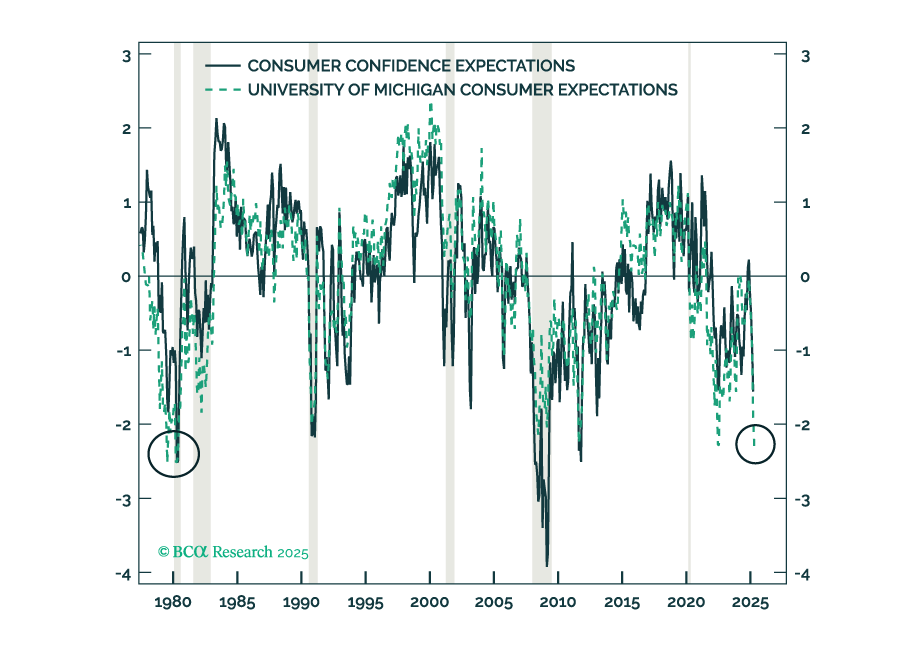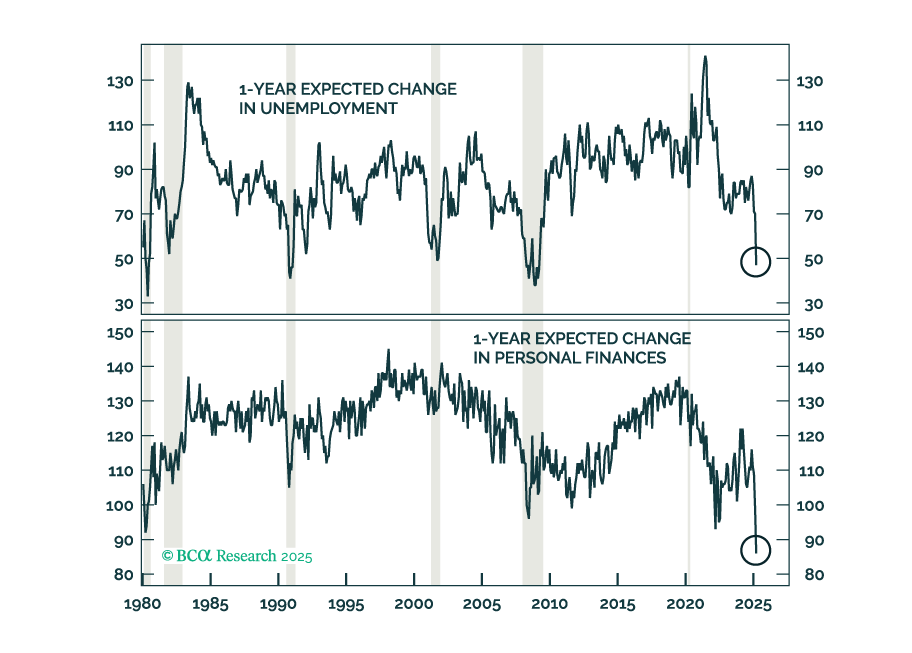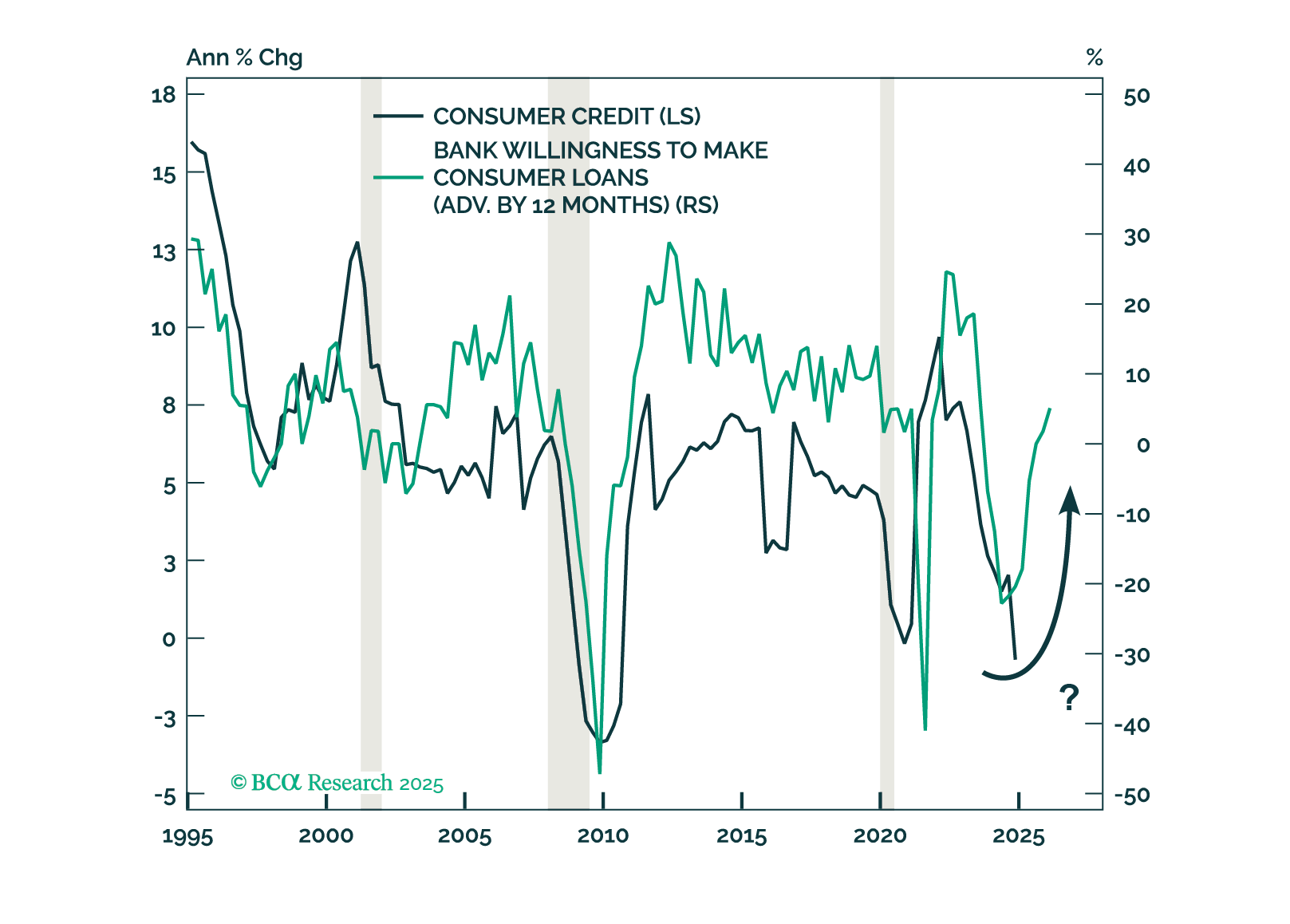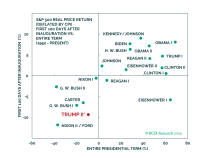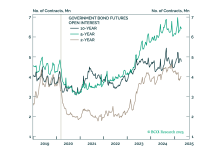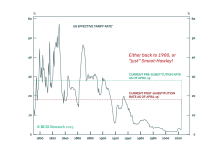Executive Summary
- Our contrarian call for a powerful first half equity rally is being vindicated as the S&P 500 is within 2% of our 4,500 target.
- As nice as it is to be on the right side of a winning call, it does not necessarily portend future success. An investment track record is only as good as the ex-ante rationale underlying it. Right for the wrong reason(s) does not count.
- Our overall macroeconomic assessment over the three COVID years has been sound. We swiftly fastened on policy’s essential role, and correctly anticipated both its evolving course and financial markets’ reaction to it until 2022 caught us napping.
What Goes Up Must Come Down (And Vice Versa)
 Fullscreen Fullscreen |
Feature
Discomfited by social media’s ravenous look-at-me ethos and its viral spread beyond the virtual world, we barely noted the performance of our existing recommendations during last week’s webcast, preferring to keep the focus on what’s to come. Though we don’t do victory laps, which are prone to provoke the market gods and are vulgar in any event, it is important to look back to assess our output and seek ways to improve our process. It’s worthwhile to perform the assessment publicly, as well, so clients can consider how we arrived at our take on the year-of-two-halves narrative as they weigh how credible our story’s second act may be.
We Were Right, …
In our 2023 Key Views Special Report, published last December, we reiterated the tactical risk-friendly positioning that we recommended throughout 2022.
We begin 2023 by advocating for tactical risk-friendly positioning but we expect to pivot away from it by the middle of the year once relief that inflation is easing and the recession has been delayed allows the S&P 500 to retrace much of its bear-market losses. The way we see things now, we expect the mid-4,000s will be an attractive entry point for betting against the index in preparation for its test of new cycle lows. For the time being, we make the following tactical recommendations:
- Overweight equities in multi-asset portfolios. Sentiment is too gloomy, too soon. The 2022 selloff was overly anticipatory, and equities will gain a tailwind when the recession arrives later than the crowd expects.
- Underweight fixed income and overweight cash in multi-asset portfolios. Underweighting bonds will allow us to maintain an overall bias toward upside growth surprises while nodding to high uncertainty by retaining some excess cash.
With the S&P 500 up over 16% year-to-date on a total return basis, outpacing fixed income by 13.5 percentage points, our recommendations have paid off handsomely. Although we were wrong to remain overweight equities across 2022 and continue to kick ourselves for being slow to connect the dots between startlingly high inflation, the most determined rate hiking campaign in four decades and investors’ violent aversion to it, equities only underperformed fixed income by four percentage points last year. This year’s positive alpha has more than made up for last year’s shortfall.
Table 1
COVID And Caution Don't Mix
 Fullscreen
Fullscreen
Table 1 shows calendar year performance for 2020, 2021 and 2022 and year-to-date performance for 2023. We did not maintain our recommendations across every calendar year, however, so our pandemic-era performance is best measured by starting in the middle of March 2020, when we initiated tactically neutral equity, underweight fixed income, and overweight cash recommendations before dropping the tactical call at year end as pandemic concerns ebbed. We were continuously overweight equities and underweight fixed income over a twelve-month timeframe until late 2022 but have maintained a tactical equity overweight once stocks began to swoon early last year.
Favoring equities has been unequivocally correct as annualized total returns on the S&P 500 have outpaced those on benchmark bond indexes by nearly thirteen percentage points since the end of 2019. There are two blots on our record over that stretch: the tactical caution we preached across 2020 following COVID’s arrival and our complacency at the outset of 2022. The former left us merely equal weight equities as they exploded off their pandemic bottom and diverted capital from bonds to cash while the Bloomberg Barclays benchmark beat T-bills by almost seven percentage points. On balance, however, asset allocations aligned with our calls across the period would have generated positive alpha.
… But Did We Deserve To Be?
While tabulating ex-post performance is a simple mechanical exercise with an objectively correct answer, explaining it is subjective. Reading through our 2020 and 2021 reports shows that we did not waver in our conviction that fiscal and monetary stimuli would kindle an expansion after the initial COVID shock and extend it for longer than the consensus thought possible. We had forgotten how much pushback we got from clients and our colleagues until we waded through the archives: the investment community was skeptical about policymakers’ pandemic efforts to prop up the economy from the jump and often bridled at our view that victory was nearly assured.
The overriding questions on investors’ minds are why the stock market and the economy have parted company so decisively and how long they can continue to diverge. Our explanation turns on policy: the Fed has intervened mightily to hold down Treasury yields and keep financial markets functioning, while Congress has thrown open the federal coffers to keep laid-off workers and suddenly teetering businesses afloat. …
… We are optimistic about equities’ prospects over a twelve-month timeframe. Our rationale is that easy monetary policy and generous fiscal spending will outlive the social distancing measures they were prescribed to treat. Low interest rates, ample liquidity and pumped-up aggregate demand form a highly supportive backdrop for equities and should help them handily outperform bonds. (June 1, 2020)
The rationale underpinning our constructive view on the economy and financial markets is twofold: first, we expect bridging the remaining virus gap will remain the top policy priority; second, the measures implemented last year were so large that they will continue to bear fruit in 2021. The bottom line is that we expect that policymakers in the US and much of the rest of the developed world will err to the side of providing too much stimulus, putting the wind at financial markets’ back across the coming year. (“2021 Key Views: It’s The Policy, Stupid,” December 14, 2020)
In 2021, we trained a close eye on our estimate of households’ excess pandemic savings. We viewed the excess savings as households’ supplemental capacity to consume and fastened on the savings rate as the best proxy for their willingness to deploy it. As inflation reared its ugly head in the second half of 2021, and real disposable income began to contract, households started dipping into their excess savings and began avidly drawing down their stash once they regained the full palate of consumption options in 2022 (Chart 1). Although real consumption has grown at no more than a ho-hum average rate of 2.25% in the six quarters since the savings rate fell below its pre-pandemic baseline, it has steadied GDP growth while other components made big swings (Chart 2, green segment).
Chart 1
When Incomes Dipped, Excess Savings Filled The Breach
 Fullscreen Fullscreen |  Interactive Chart Interactive Chart |
Chart 2
Consumption Has Been A Steadying Influence
 Fullscreen Fullscreen |
Our contention that risk assets have a path to rally over the next twelve months underpins our recommendation to overweight equities within a multi-asset portfolio over that timeframe. We are not saying that skies are blue and everything is great; we simply think that the gloom has gone too far and the equity selloff is overdone. As the saying goes, more money is made owning stocks from terrible to bad than it is from good to great. Judging by the economic surprise index (Chart 3), the bar for getting more terrible has been set pretty high. (July 11, 2022)
 Fullscreen Fullscreen |  Interactive Chart Interactive Chart |
With consumers backstopping the economy, we expect that corporate revenues will hold up better than the consensus expects. We additionally believe fears of a wage-price spiral are way overblown and are leading investors to overestimate how much profit margins will contract in the near term. Better-than-expected revenues and less-than-expected margin contraction add up to positive earnings surprises and power our bullish near-term equity view. (October 3, 2022)
Clients asked us about the probability of a wage-price spiral in virtually all of our 2022 meetings, spurred on by the concerns that animated an indelible Barron’s cover image in mid-May (Figure 1). We quashed the idea as best we could, drawing on our research into US labor relations history to offer the opinion that the probability was infinitesimal. Wages’ failure to keep up with inflation supported our claim (Chart 4), as has labor’s inability to hold the ground it reclaimed from capital when front line workers received the equivalent of combat pay in 2020 (Chart 5). Corporate profit margins have proved far less vulnerable than the wage-price spiral alarmists contended.
Figure 1
The Great Wage-Price Spiral Scare of '22
 Fullscreen Fullscreen |
Chart 4
Never Let Facts Get In The Way Of A Good Story
 Fullscreen Fullscreen |  Interactive Chart Interactive Chart |
Chart 5
Workers' Loss Is Shareholders' Gain
 Fullscreen Fullscreen |  Interactive Chart Interactive Chart |
Our sense is that the investment community is girded for the 20-25% peak-to-trough decline in trailing four-quarter S&P 500 earnings to begin with the third-quarter earnings being reported over the next few weeks. [O]ur best guess is that the four-quarter trough won’t begin until 3Q23.
If the marginal price-setter in the equity market is the community of professional money managers judged on their relative quarterly performance, a four-quarter delay in the earnings recession’s estimated time of arrival could spark meaningful equity inflows. We remain acutely sensitive to households’ consumption decisions, and we will throw in the towel on our constructive near-term stance if the savings rate backs up in a way that suggests consumers are circling the wagons. We are also alert to the threat from unmoored inflation expectations, which could lead the Fed to move as quickly as possible to squelch the expansion. (October 17, 2022)
Our view that institutional investors are the marginal price-setter in public securities markets, and that they are acutely sensitive to relative near-term performance, is difficult to prove. We contend that the intuition behind it is sound, however, and that it lends itself to a solid hypothesis for explaining the current leg of the runup. As consensus growth expectations are revised higher along the lines of the FOMC’s latest summary of economic projections, prematurely defensive managers will be forced to increase their exposures.
From a fundamental perspective, our ever-present concern that consumers would lose their nerve and sit on their excess savings did not come to pass as the savings rate went down and stayed down (Chart 6). Our worst-case inflation scenario never materialized as inflation expectations remained tame despite hair-raising year-over-year inflation readings (Chart 7).
Chart 6
Consumers Remained Ready, Willing And Able ...
 Fullscreen Fullscreen |  Interactive Chart Interactive Chart |
Chart 7
... And Inflation Expectations Remained Well Anchored
 Fullscreen Fullscreen |  Interactive Chart Interactive Chart |
Chart 8
Bank Loan Portfolios Are Not Shrinking
 Fullscreen
Fullscreen
We are sticking with our constructive near-term take on the economy, which stands out against the gloomy consensus calling for a mid-year recession. Supported by a flush consumer, we expect the expansion will persist for all of 2023. We foresee consistently positive fundamental surprises until the expectations bar is raised to a level that an economy weighed down by 500 basis points of policy rate hikes over 15 months cannot clear. (March 6, 2023)
Growth is unquestionably slowing, but we think the labor market is too strong, and households’ financial position too solid, for it to stop suddenly this quarter, as the investor consensus expects. Tighter lending standards will act to cool growth, but there’s still enough liquidity in the system that viable businesses will not be starved for capital. Provided that decelerating inflation accompanies positive near-term surprises, we expect the S&P 500 to rally to 4,500 by the summer. We reiterate our tactical (0-3-month) equity overweight and our 12-month equity underweight. Both positions make us an outlier within BCA and, as far as we can tell, the broader investment community. (April 24, 2023)
Just as we resisted the wage-price spiral narrative, we have pushed back against the “banking crisis,” arguing that banking turmoil is a more apt description for what’s ensued in the wake of three high-profile bank failures. Though we conceded by early April that the banking-crisis-terminology train had already left the station, we did not let our own strategy prescriptions succumb to it. It is still too early to tell if the bank failures will stem credit availability, but it hasn’t happened yet, and our sense is that the system still has plenty of liquidity (Chart 8).
Our Tale Of Two Halves Summary Road Map
Start: mid-2022
The consensus is too gloomy.
Positive surprises will ensue.
Expectations will be raised.
The pros will be drawn back in.
SPX hits/exceeds 4,500. (Estimated time of arrival: mid-2023)
Consensus will become too buoyant.
Lagged effects of hikes will bite.
Negative surprises will ensue.
SPX revisits 3,600 low. (Estimated time of arrival: late 2023/early 2024)
Recession arrives in 1H24.
Closing Arguments
Given the narrowness of the rally and the fact that AI has not received a single mention in our reports, one could claim that our bull call simply happened to be in the right place at the right time. We do not share that view, as the upward revision of growth expectations we’ve been calling for is occurring in real time on Bloomberg’s consensus economic forecasts screen (ECFC-Go) and the FOMC’s Summary of Economic Projections, where the median estimate of calendar 2023 real GDP growth was revised up to 1% at last week’s meeting from 0.4% in March. The FOMC participants’ adjustment is exactly in line with our repeated prediction that consensus growth expectations would have to be revised from 0-0.5% to 1-1.5% once the recession’s start date was pushed back to the first half of 2024 from the second or third quarter of 2023.
We believed that the nearly unanimous expectation that a recession would begin in the second or third quarter was premature because it underestimated households’ ability to continue consuming at a rate that would delay the onset of the recession until 2024. If the recession is delayed by two, three or four quarters, the double-digit decline in the four-quarter moving average of S&P 500 earnings will be as well.
We have argued that the delay in the earnings decline will exert considerable pressure on underexposed professional asset managers, whose compensation and continued tenure is based on their relative short-term performance. As we further contend that professional managers are the marginal price setter in public securities markets, we have argued that positive economic surprises will be accompanied by flows into equities (from cash) and rotation within equities (from defensive sectors to more cyclically exposed sectors).
We cannot say with certainty that the consumer is the reason why the economy is outperforming expectations. Even if we could, the availability of excess pandemic savings and households’ willingness to spend them may not be as important as we’ve made them out to be. But when consumption accounts for two-thirds of the US economy, we believe there’s a high probability that it’s at the heart of the matter. As for our translation of that fundamental insight to market action, we fiercely defend the notion that people respond to incentives and believe it provides a solid explanation for why the rally has quickened in the last few weeks and may persist into July.
Doug Peta, CFA
Chief US Investment Strategist
dougp@bcaresearch.com
 You are reading a complimentary report. To find out more about our services,
You are reading a complimentary report. To find out more about our services, 

